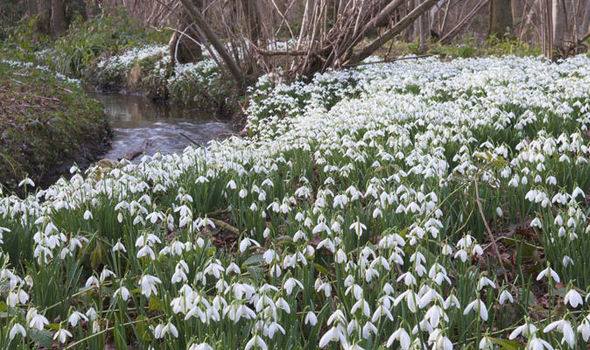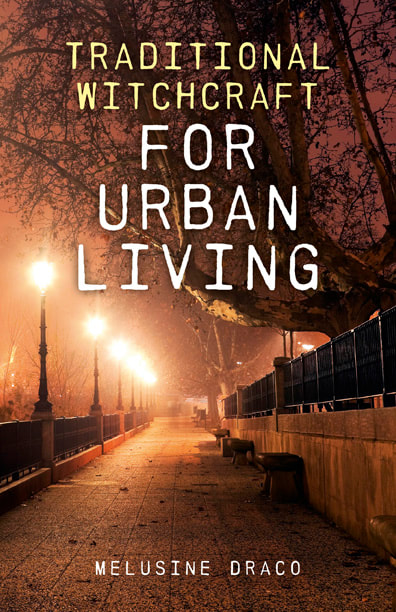
Since the Victorian era, it is customary to remove Yuletide decorations on Twelfth Night ... but up until the 19th century people would keep their decorations up until Candlemas Eve. If this custom wasn’t followed, it was believed that greenery would not return and vegetation would not grow, leading to agricultural shortages and subsequently food problems. Even though Christmas decorations are now less about foliage and more about baubles, glitter and tinsel, many people still adhere to the superstition which they ascribe to the modern Twelfth Night on the 5th January. This 17th century poem by Robert Herrick gives us a better idea of what sort of greenery was used prior to the introduction of the Victorian Christmas tree … In his ‘Ceremony Upon Candlemas Eve’ he wrote …
DOWN with the rosemary, and so
Down with the bays and misletoe ;
Down with the holly, ivy, all,
Wherewith ye dress'd the Christmas Hall :
That so the superstitious find
No one least branch there left behind :
For look, how many leaves there be
Neglected, there (maids, trust to me)
So many goblins you shall see.
In his longer ‘Ceremonies for Candlemas Eve’, he added:
DOWN with the rosemary and bays,
Down with the misletoe;
Instead of holly, now up-raise
The greener box (for show).
The holly hitherto did sway ;
Let box now domineer
Until the dancing Easter day,
Or Easter's eve appear.
Then youthful box which now hath grace
Your houses to renew ;
Grown old, surrender must his place
Unto the crisped yew.
When yew is out, then birch comes in,
And many flowers beside ;
Both of a fresh and fragrant kind
To honour Whitsuntide.
Green rushes, then, and sweetest bents (grasses),
With cooler oaken boughs,
Come in for comely ornaments
To re-adorn the house.
Thus times do shift; Each thing his turn does hold ;
New things succeed, As former things grow old.
In fact, Herrick (1591-1674) wrote at least four poems concerning Candlemas. Likewise, ‘Upon Candlemas Day’ shows the day itself had its own entrenched traditions:
END now the white loaf and the pie,
And let all sports with Christmas die.
Finally, in ‘The Ceremonies for Candlemas Day’, he wrote:
KINDLE the Christmas brand, and then
Till sunset let it burn ;
Which quench’d, then lay it up again
Till Christmas next return.
Part must be kept wherewith to tend
The Christmas log next year,
And where ‘tis safely kept, the fiend
Can do no mischief there.
This latter poem recalls the tradition that Christmas greenery would be burned and the Yule log allowed to burn down completely, but that a portion should be held back to start next year’s Yule log fire (and as a good luck charm against ‘mischief’). The ashes were to be spread over the land/garden to ensure a good harvest and the Yule log for the next year would be chosen at that time. Candlemas was also believed to be a good day for weather forecasting (it falls halfway between the Winter Solstice and the Spring Equinox): If it was a sunny day, there would be forty more days of cold and snow. This belief has carried into folklore tradition around the world, and one olde English rhyme says:
If Candlemas Day be fair and bright,
Winter will have another flight;
But if it be dark with clouds and rain,
Winter is gone, and will not come again.
All this Christian overlay merely confirms what an important festival this was for our pagan forebears and, as such, it became the feast of the Purification of the Virgin Mary in the church calendar. The Christian feast-day commemorates the ceremony performed by the mother of Jesus in the temple of Jerusalem forty days after the birth of Christ in fulfillment of the Mosaic Law requiring the cleansing of a woman from the ritual impurity incurred at childbirth. The convenience of having yet another important pagan festival falling within the ‘nativity cycle’ meant that Brigid easily became a Catholic saint! In the early calendar, on that morning, many candles were lit in the church, symbolically driving out the darkness. In the afternoon, there was feasting all round, with much music as Candlemas Day marked the formal end of winter.
In the pagan Celtic world it was Imbolc, the festival marking the beginning of spring that has been celebrated since ancient times. It is also a cross quarter day, that midpoint between the Mid-Winter Festival and the Spring Equinox; the name deriving from the OldIrish imbolg meaning ‘in the belly’, a time when sheep began to lactate, their udders filled and the grass began to grow. Imbolc was a time to celebrate Brigid, as the goddess of inspiration, healing, and smith-craft, with associations to fire, the hearth and poetry. Also called Là Fhèill Brìghde, it corresponds to the Welsh Gŵyl Fair y Canhwyllau as a traditional festival marking the beginning of spring; it was widely observed throughout Ireland, Scotland and the Isle of Man. Local festivals marking the arrival of the first signs of spring may be named after either the Cailleach or Brìghde, while some interpretations have them as the dual face of the same goddess.
Là Fhèill Brìghde, is also the day the Cailleach gathers her firewood for the rest of the winter. Legend has it that, if she intends to make the winter last a good while longer, she will make sure the weather on 1st February is bright and sunny, so she can gather plenty of firewood to keep herself warm in the coming months. As a result, people are generally relieved if Là Fhèill Brìghde is a day of foul weather, as it means the Cailleach is still asleep, will soon run out of firewood, and therefore winter is almost over.
The Cailleach is a divine hag, a creatorix, weather and ancestor deity while Brigid is a sort of Celtic Athena, with very similar functions. Although most often presented as a mysteriously veiled, ancient woman, the Cailleach is also said to take on the guise of many different beasts and birds as she travels around the rugged landscapes of her homeland. The Cailleach Béara is said to be one of the most ancient of mythological beings, appearing as an old crone who brings winter with her blackthorn staff when she appears and who wields incredible power over life and death. Her ability to control the weather and the seasons meant many communities looked upon her with a mixture of reverence and fear.
Candlemas, then, is the re-awakening of the Old Lass within Old Craft belief and also coincides with the Roman Festa Candelarum, which commemorated the search for Persephone by her mother Demeter, Persephone having been kidnapped by the King of the Otherworld, Hades. As Persephone was no longer in our world, darkness was everywhere, so her mother used a torch in her search, and in the end obtained a decree that her daughter would be on Earth and Olympus for two thirds of the year (the light period), and in the Other World (Hades) for the other third of the time (winter season). The festival of candles symbolizes the return of the Light.
During medieval times, peasants still carried torches and crossed the fields in procession, praying for purification of the ground before planting. In the early churches, the torches were replaced by blessed candles whose glow was supposed to take away evil; villagers and townsfolk would later take the candles to their houses to bring protection to their homes and family. During the evening, an especially large candle would have been lit while the family gathered around waiting for a celebratory feast, during which plans and promises to be kept through the new season would be discussed and debated until it burned out. It was also customary at sunset to ritually light a candle in each room of the home in honour of the Sun’s return. Not surprisingly, in 1543, Thomas Cranmer, Archbishop of Canterbury, banned candles on Candlemas Day because the rites were seen as superstitious, i.e. pagan!
In traditional British Old Craft, however, Old Candlemas/Old Imbolc now falls on the 15th February due to the changes in the calendar. Imbolc is mentioned in some of the earliest Irish literature and there is evidence it has been an important date since pre-Christian times: at the Mound of the Hostages on the Hill of Tara the rising sun at Imbolc illuminates the inner chamber; the sun also illuminates the chamber at Samhain. Our Neolithic ancestors were obviously acutely aware of this time of the year, as were the Celts and the later settlers in the Ireland, each seeming to adopt some of the traditions and beliefs of the previous/existing culture.
In county Meath there are two important Neolithic solar alignments to Imbolc. Firstly, on the Hill of Tara, at the Mound of the Hostages a Neolithic passage grave has an entrance directed towards the sunrise on the 8th November and the 4th February, the start and end of winter respectively. As the sun rises it squarely illuminates the back-stone of the chamber for about a week. The stone engravings are illuminated, not by the sun beam directly, but its diffuse reflection from the back stone. Simultaneously in Cairn L on Cairnbane West, Loughcrew, the sun is shining into the monument to perform what can only be described as a carefully choreographed ballet. At the instant of sunrise the first rays of light are focused on a free standing white pillar stone and nothing else. The light is seen to visibly move from top to bottom in a matter of seconds and then swing from left to right where it is then focused onto a ‘mirror’ stone which throws the diffuse sunlight into a dark recess illuminating one of the most accomplished pieces of Neolithic art in the world.
This is the only time when the carvings can be seen without the aid of a torch. All the fine detail being revealed in a very dramatic and stunning way. The sunlight then falls on an angled stone and again within a matter of seconds is seen to shrink and disappear as the sun moves higher in the sky outside the chamber. Curiously the central motif on the Mound of the Hostages stone and the Cairn L stone are remarkably similar, sharing images of nested concentric circles. From these ancient rites we can see how they identify with the Old Lass and her awakening, not to mention their association with the Mysteries of the Elder Faith.
In Witchcraft: A Tradition Renewed, Evan John Jones acknowledges that Candlemas is the first of the great Sabbats and the start of the ritual year, when it is time to let go of the past and to look to the future, clearing out the old, making both outer and inner space for new beginnings. In ancient Rome, on the eve of Candlemas all the home fires would have been put out, cleaned out, and re-lit being symbolic of the returning light of the Sun. In Old Craft, and in keeping with this symbolism, a broom made from the three sacred woods symbolic of the three-fold aspects of the goddess (the handle from ash, the brush from birch twigs and the binding cord from willow) would be placed by the front door to symbolize sweeping out the old and welcoming in the new.
We are now preparing to move into the bright half of the year and those four great fire festivals that are marked by the Equinoxes and Solstices of the solar year, together with the four traditional celebrations of Old Beltaine, Old Lammas, Old Hallowe’en and Old Candlemas making up the eight Sabbats of the witch’s year that will be coming round again. The fire festivals occur at the beginning of each quarter of the solar-tide cycle, with Candlemas marking the end of the reign of the Holly King and heralding the first stirrings of the bright tide of summer of the Primal Goddess.
<



 RSS Feed
RSS Feed